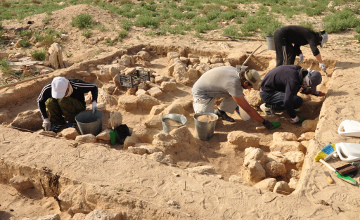
18.11.2014
1384
During excavation of the ancient town called Kettikkala with the total area of 5 ha on the territory of the modern city of Fort-Shevchenko archaeologists from Mangistau discovered coins
The research is currently finished and numismatists defined the place of their minting — the Volga region. In addition, on the territory of the town archaeologists found coins from Khorezm, fragments of ceramics from Azerbaijan and Iran. The town of Kettikkala was founded in the fourteenth century, the epoch of the Holden Horde. This means that Tyubkaragan port (Bautino bay) operated at that time like Aktau port nowadays.
"Most of coins were minted at the Volga region in the centers of the Golden Horde. It directly shows that there was maritime traffic between the Tyubkaragan and Volga (territory of Mangistau region and Russia). There was no other way for coins to reach this extreme point of Tyubkaragan. Thus, the port of Bautino bay was the place of trade with Iran, Azerbaijan, Derbent, Volga region, the Urals and Khorezm — famous archaeologist Andrey Astafyev noted.
According to him, there is another more ancient settlement, named Korgantas, on the territory of the city of Fort-Shevchenko. That is the settlement which played crucial economic role when the northern rout of the Great Silk Road emerged in the sixth century.
"That was the time when the thirty years war between Iran and Byzantium began. Sogd had accumulated many goods manufactured in China and local area. Sogd merchants started searching new trading roads. We didn’t know before what the route of that road was and which ports ships entered. And now studying these towns I conclude that it run not via Ustyurt, as we consider before, but via the Mangyshlak peninsula, via all suitable bays. Goods were delivered to the western coast of the Caspian Sea by sea and then via Volga-Don channel to Europe", — he summarized.